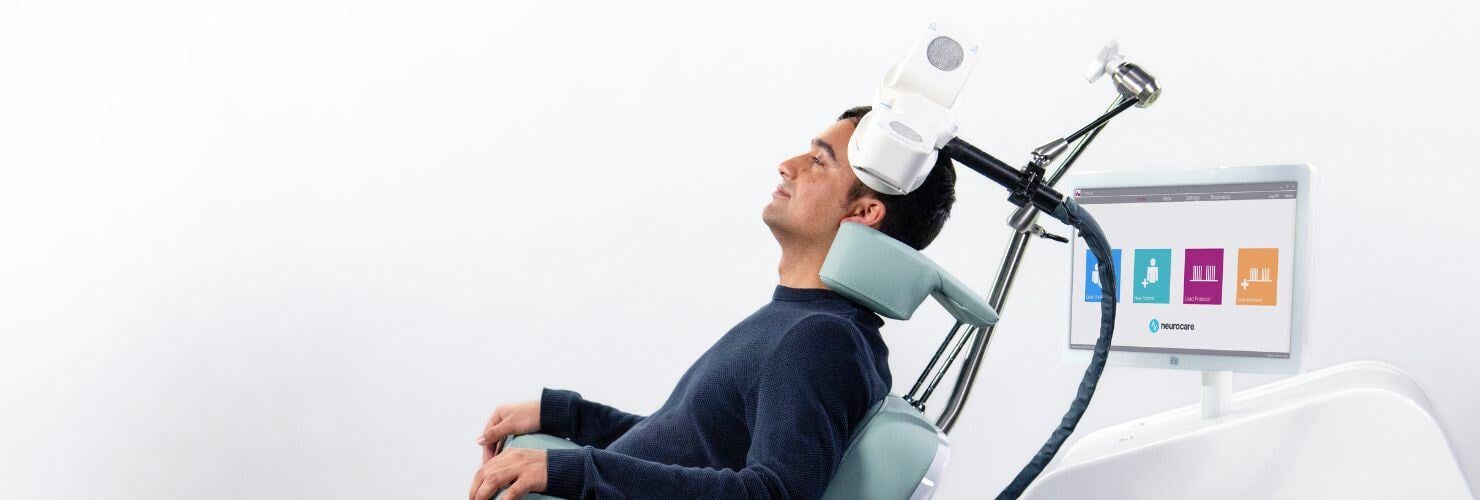rTMS vs ECT Treatment
When individuals are introduced to rTMS treatment, they may question if it is identical to or akin to ECT ('Electroshock') therapy. Although both methods are employed in treating Major Depression, they differ significantly in their administration and side effects.

How they work
Electroconvulsive Therapy (ECT)
ECT involves the application of electrical currents via electrodes positioned on the head to trigger seizures. Despite the administration of muscle relaxants during anesthesia, patients often experience soreness upon waking due to the seizures. This procedure is invasive and requires hospitalization.
Transcranial Magnetic Stimulation (TMS)
Transcranial Magnetic Stimulation (TMS) employs magnetic pulses to stimulate neuroplasticity, which is the brain's remarkable ability to repair and forge new connections between nerve cells. This innovative approach specifically targets the prefrontal cortex, a small area of the brain associated with the symptoms of depression. Importantly, TMS is a non-invasive treatment, offering a compassionate alternative for those seeking relief.
Due to their distinct mechanisms, the patient experience with TMS is notably different from that of Electroconvulsive Therapy (ECT). For a comprehensive comparison, please refer to the detailed analysis below.
TMS compared to other treatments
| Treatment | TMS | ECT |
|---|---|---|
| Technology | Magnetic impulses applied to a maximum 3cm depth around the brain | Electrical currents sent through the brain via electrodes |
| Process | Gradually stimulates or modulates targeted brain pathways/areas | EECT treatment uses electrical currents to trigger a seizure |
| Invasive? | No anaesthetic is required – patient is awake and relaxed | General anaesthetic with muscle relaxants to calm convulsions |
| Treats | Depression, addictions, anxiety, PTSD, OCD, BPD, chronic primary insomnia | Severe and treatment-resistant depression, schizophrenia, bipolar disorder, catatonia |
| Sessions | For depression, expect daily sessions for 3 weeks | Usually twice a week for 3 to 6 weeks |
| Recovery | Immediate recovery – patients can generally return straight to work or normal activities | Hours/days to recover – patients can expect to feel drowsy and unwell after a seizure and general anaesthetic |
| NICE approved | ✓ | ✓ |
| Non-invasive | ✓ | ✘ |
| Outpatient treatment | ✓ | ✘ |
| Ongoing recovery | ✓ | ✘ |
| Side-effects | Mild headaches Mild fatigue 1 in 50,000 risk of seizures |
Headache 33% |
| Success rate | ECT improvements are hard to track, although reports suggest around 48% of patients enter remission | 49% of Smart TMS patients treated for depression with TMS have into remission since we started in 2015 |
More Information – TMS vs ECT
The risks of ECT may be greater in older people and ECT should only be given in this group with considerable caution.
The remission rate in patients with treatment resistant depression with ECT is about 50%. In most published studies the rates of recovery with ECT are higher than with rTMS by about 10%.
Failure to respond to ECT does not necessarily mean that the person will fail to respond to rTMS.
Background/History - ECT vs TMS
ECT was first introduced in the 1940s and is now used to treat the most severe cases of depression, usually after all antidepressant and therapy combinations have been tried without success.
TMS has been used since the 1980s and can be used to treat a large majority of patients living with depression and other mental health conditions.
Treatment Time - ECT vs TMS
ECT is more invasive than TMS and requires the patient to have a general anesthetic, which carries its own risks and restrictions.1
A session of TMS takes 30 minutes and you are able to go about your day as normal immediately afterwards, without any need to go into hospital or disrupt your usual routine.
How ECT Works
Electroconvulsive Therapy is a treatment that involves sending an electric current through the brain. This will then trigger an epileptic seizure, although the physical element of this is generally minimal as muscle relaxants and general anaesthetic minimise the convulsions so that it looks more like a twitch.
The treatment has been shown to relieve the symptoms of some mental health problems including treatment-resistant depression, catatonia, bipolar disorder (manic depression).
The treatment is given under a general anaesthetic and using muscle relaxants, so that your muscles only twitch slightly, and your body does not convulse during the seizure.
ECT has something of a bad reputation. It is an invasive procedure which may leave unpleasant side-effects. In the past, it may have been used without the patient’s consent and/or not under general anaesthetic. Some people have a bad experience of ECT, but for others it has proven helpful in breaking the cycle of mental illness.
How TMS Works
Transcranial Magnetic Stimulation is a treatment that delivers magnetic impulses to the brain pathways and areas associated with the condition in order to gradually stimulate or modulate them.
The process is referred to as neuroplasticity and uses the brain’s ability to mend and build connections between the nerve cells.
Treatment is targeted to the specific zones affected.








